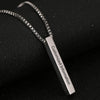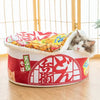How to Give a Cat a Pill: A Scientific and Practical Guide
Administering medication to a cat can be one of the most challenging tasks a pet owner faces. Cats are naturally resistant to being handled in unfamiliar ways, especially when it involves anything going into their mouths. Understanding the science of feline behavior and applying proper techniques can significantly improve the success rate and reduce stress for both human and animal. This guide explores proven, veterinarian-recommended strategies on how to give a cat a pill effectively, so you can ensure your pet receives the medical care it needs.
Understanding Feline Resistance
Cats are highly sensitive to changes in their environment and routines. When a cat is restrained or forced to take medication, it often triggers a stress response rooted in their biology. In the wild, their survival relies heavily on autonomy and stealth. Therefore, when restrained, their instinct is to resist, claw, or flee. Knowing this helps us approach pill administration for cats with empathy and preparation. Studies indicate that reducing stress during medical treatment can lead to better therapeutic outcomes, as elevated cortisol (a stress hormone) levels in cats can hinder immune response and delay recovery.
Selecting the Right Form of Medication
Pills are not the only option. Some medications come in multiple formats such as liquid suspensions, dissolvable powders, or even flavored chewables. Always consult your veterinarian to determine whether the form you're using is the most suitable for your specific cat. That said, when pills are the only option available, it's essential to learn the proper technique for administration. The use of pill pockets or specially designed pilling devices can often significantly ease the process. Remember, never crush a pill without your vet's guidance, as it may alter drug efficacy or cause oral irritation.
Manual Administration: The Direct Method
For cats who do not respond well to treats or disguising methods, direct oral administration is necessary. Begin by wrapping your cat in a towel to restrict movement—a technique often called the "kitty burrito." Hold them firmly, but not aggressively, and position them on a non-slippery surface. Tilt their head back gently until the nose points upward, and use your dominant hand to open the jaw. Place the pill as far back on the tongue as possible, ideally on the back of the tongue to trigger the swallow reflex. Immediately follow the pill with a small syringe of water to encourage swallowing. Some cats may spit it out, and you may need several attempts, so patience is key. It's normal to feel a bit distressed during the first few tries, but your confidence and precision will improve over time.
Disguising the Pill in Food
Hiding medication in food can be an effective strategy for cats who are food-motivated. Strong-smelling items like tuna, chicken, or commercial treats can help mask the scent and texture of a pill. Be sure to use only a small amount of food to ensure the entire dose is consumed. If the cat eats around the pill or leaves food behind, this method may not be viable. Some pills have a bitter coating that cats can instantly detect when chewed, so trial and error may be necessary to find what works best. Some products, like pill pockets—soft treats with a hollow center—are specifically made for this purpose and are generally well-accepted by pets.
Use of Pill Dispensers
Pill dispensers, also known as pill guns or pill poppers, are valuable tools for administering medication safely and efficiently. These devices allow you to place the pill deep into your cat’s mouth without putting your fingers at risk of being bitten. To use, load the pill into the holder, open the cat’s jaw gently as described above, and insert the device toward the back of the throat. Depress the plunger to release the pill, then quickly follow with a small amount of water. Dispensers are especially useful for cats that are difficult to handle or for owners who need to minimize hand contact with the cat’s mouth.
Reinforce Positive Behavior
After every attempt—successful or not—reward your cat with affection, treats, or playtime. Reinforcement helps associate the medication process with positive outcomes, which can gradually reduce anxiety and resistance over time. Behavioral science supports that positive reinforcement strengthens desirable behavior more effectively than punishment reduces undesirable behavior. It’s important to remain calm and confident during the process, as cats are highly perceptive of human emotions. If you appear anxious or rushed, your cat will likely mirror that tension.
Consulting with a Veterinarian
If home administration proves impossible or highly stressful for your pet, consult your veterinarian. Some clinics offer medication appointments where trained staff administer the dose. Additionally, your vet may be able to compound the medication into a more acceptable form, such as flavored liquid or a topical gel applied on the ear for transdermal absorption. Not all medications are available in alternative formats, but newer advances in veterinary pharmacology are expanding options. Never skip doses or stop a prescribed treatment without professional advice, as doing so can severely impact your cat’s recovery or management plan.
Conclusion
Mastering how to give a cat a pill requires understanding their behavior, choosing the right tools and methods, and reinforcing positive associations. While there's no universal solution, approaching the task with science-based strategies and patience can significantly improve your outcomes. Whether through direct manual method, disguise in food, or pharmacological tools like pill dispensers, your goal is to ensure your cat receives its necessary medication with minimal stress. If challenges arise, remember—veterinary support is always available, and no pet owner is expected to handle everything alone.


































